Pinkney History & Voices of Pinkney
Pinkney History
The Pinkney Neighborhood has a rich and vibrant history. The Association is gathering information, photos, and recorded interviews in an effort to document and preserve the neighborhood’s history. Regularly come back to this page which chronicles this information, as we gather it. If you have information or would like to help in gathering and preserving historical information, please contact us at pinkneyneighborhood@gmail.com.
General Information
From historicalmarkerproject.com‘s entry on the Pinkney Neighborhood
The Pinkney neighborhood at the bend of the Kansas River began in 1854 as part of the original Lawrence townsite. North/South streets to the west of Massachusetts St. were named for states in the order in which they were admitted to the United States. East/West streets were changed to numbers in 1913. The modern neighborhood extends to Iowa St.
Historic Districts
From livingplaces.com’s entries on the Pinkney Neighborhood
The Pinkney I District was listed on the National Register of Historic Places in 2004. Unlike the Old West Lawrence neighborhood, the Pinkney I neighborhood was never home to the mansions of Lawrence’s newly wealthy merchant class. Housing primarily accommodated the town’s working class, reflected in the majority of modest homes. Developed from circa 1860 to circa 1927, the district contains 54 dwellings and 37 outbuildings. Most houses include detached garages or carriage houses located at the rear of the property on an alley. The grid of streets that runs through the district was platted in 1858, although numbered streets originally had names. West 6th Street was named West Pinkney/Pinckney Street and 5th Street was Perm Street. The predominant house style in the Pinkney I Historic District is Folk House National, followed by Folk Victorian.
The Pinkney II District is located northwest of Lawrence’s original business district. The district encompasses slightly more than one block of dwellings and outbuildings. The surrounding streets are set on a grid established in Lawrence in 1858, early in the settlement of the town. The district includes the properties on the east and west sides of the 300 block of Indiana Street, as well as the properties at 400 and 401 Indiana St. The dwellings of the Pinkney II District are representative of working class housing from its period of significance. Because Lawrence served as the county seat, opportunities were available to all classes of workers. The Pinkney neighborhood is representative of this diversity, providing sites for houses of several styles for a wide range of incomes.
The Neighborhood’s Name
- Please visit our dedicated webpage to understand the full history, controversy, and more behind our neighborhood’s name and the reason for changing the name to “Pinkney” in July 2021 (from “Pinckney”).
Emigrant Aid Mill site in Pinkney Neighborhood
- 1880 Map of Lawrence showing “Emigrant Aid Mill” within the neighborhood: https://www.knowol.com/wp-content/uploads/2018/08/Lawrence-Kansas-1880-SM.jpg
- Emigrant Aid Company history: https://www.kshs.org/p/the-emigrant-aid-company-in-kansas/12561
History of Black Community in Lawrence (especially Pinkney)
Background on African American history in Lawrence:
- Evidence outlining Pinkney as a historically Black neighborhood: document
- https://www.kshs.org/publicat/history/2008autumn_armitage.pdf (features a piece by former neighborhood resident Katie Armitage)
- Woody Park (at 2nd and Maine St.), named in honor of Elgin Woody
- Elgin Woody lived from 1888-1978. He was a citizen of Lawrence who was committed to improving the lives of young African Americans, and the park at 2nd and Maine is named after him. Originally named Lincoln Park when it was created in 1936, the park was renamed Woody Park in 1973 in recognition of Mr. Woody’s devotion to maintaining the park, organizing local sports programs, and creating a positive and supportive environment for African American youth at a time when there were no recreation facilities or leagues that would allow them to play. The park is where the baseball and softball leagues for African Americans he organized and coached would play.
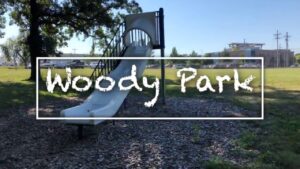
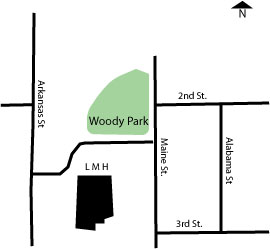
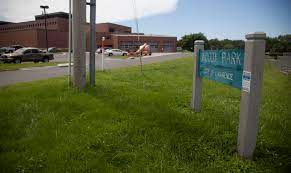
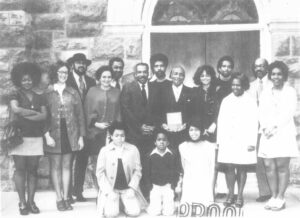
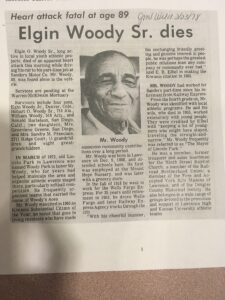 (images from Lawrence Parks & Rec, Lawrence Journal World newspaper, and personal photographs from the collection of Lawrence resident Julie Francisco respectively)
(images from Lawrence Parks & Rec, Lawrence Journal World newspaper, and personal photographs from the collection of Lawrence resident Julie Francisco respectively)
- George “Nash” Walker House – 401 Indiana St.
- World-renowned vaudevillian George “Nash” Walker constructed this home for his mother in 1908. The home retains remarkable craftsmanship & details throughout.
- George “Nash” Walker lived from 1873-1911. He was a famous African American vaudeville performer in the late 1890s and early 1900s. Born and raised in Lawrence, he left in 1893 for California to pursue his dream of acting and dancing. That year he met fellow African American performer Bert Williams and they formed a vaudeville act that was an imitation of white comedians in blackface, ultimately serving as a caricature of the idea of blackface itself. George Walker and Bert Williams became two of the most sought-after comedians on the American stage, renowned for their storytelling, singing, dancing, and pantomime. In 1897, they formed their own theatrical company and they hired as many Black performers and songwriters as they could; they prided themselves on their large payroll. After falling ill while on tour in 1909, George Walker died in 1911 at the age of 38.
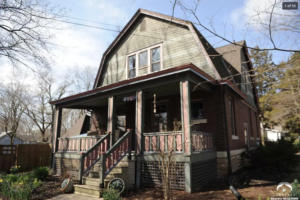
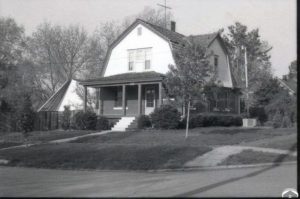
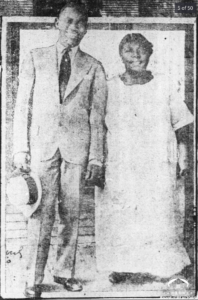
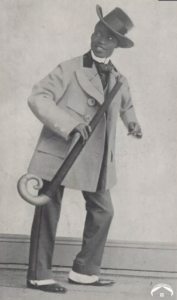
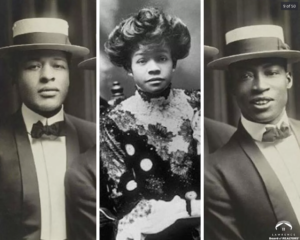 (images from Lawrence Board of Realtors)
(images from Lawrence Board of Realtors)
- Mary Jane “Mamie” Dillard House – 520 Louisiana St.
- This home was built in 1889 by Jesse Dillard, father of famous local educator Mary Jane “Mamie” Dillard. The home is in the Queen Anne style.
- From a 2008 article written by historian Katie Armitage: “Jesse Dillard was born into slavery in Henry County, Virginia, in 1826 or 1827, and despite being illiterate when he arrived in Lawrence in 1868, he became a respected property owner and made sure his daughter received an education. With five hundred dollars, Dillard purchased [a] residential lot on Louisiana Street [known as 520 Louisiana St.] where he eventually built a handsome two-story Queen Anne style house. … Though they had no formal education themselves, Jesse and [his wife] Frances Dillard…believed in schooling for their children. The Dillard’s daughter Mary graduated from Lawrence schools and then the University of Kansas in 1896. She became a teacher in the all-black primary class within Pinckney School, where young Langston Hughes was enrolled when he was seven or eight years old. After taking graduate work at the University of Kansas in English and special education, Mary Dillard became principal of Lawrence’s all-black Lincoln school.”
- Mary advocated for women’s suffrage along with civil rights & leadership opportunities for African Americans throughout her life. More here.
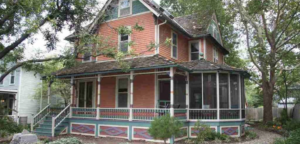
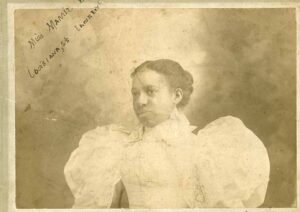
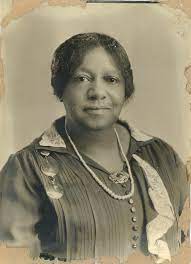 (images from realtor.com, Wikipedia.com, and KMBC News 9 respectively)
(images from realtor.com, Wikipedia.com, and KMBC News 9 respectively)
Other Historic Structures
The stone retaining wall at 5th St. and Tennessee St. is a historic structure that may have been constructed by members of the WPA in either the 1930s or 1940s. Staff at the Watkins Museum of History are checking into the history of the stone retaining wall. Pictures and newspaper articles are linked below:
– 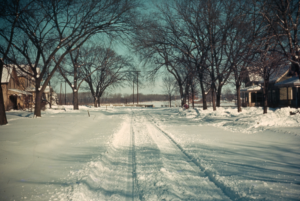
– The_Daily_Gazette_Wed__May_4__1910_; The_Daily_Gazette_Tue__Nov_4__1913_; The_Advertiser_Thu__Jul_22__1915_; Lawrence_Daily_World_Wed__Jun_26__1907_; Lawrence_Daily_Journal_World_Wed__Jul_12__1916_
____________________________________________________________________________________________________________________
Voices of Pinkney Project
Check back as we continue to gather stories and oral history.
- One terrific resource for oral history of the Black community in Lawrence can be found at http://oralhistory.lplks.org

